
The Hubble Space Telescope is the world’s first observatory that actually orbits—you guessed it—through outer space. Over the last decade, Hubble has captured some of the deepest and most detailed images of our universe. All those recent headlines about exoplanets: those discoveries come from Hubble. Scientists viewing pictures of light projected from stars over 13 billion years ago (almost at the origin of the universe): that’s Hubble, too. Hubble 3D documents the 2009 mission by the crew of the Shuttle Atlantis to make vital repairs to one of mankind’s most expensive, and significant, science projects. There would be no second chances. If the mission had failed, Hubble would be just another piece of junk orbiting above the earth, like my Direct TV satellite and Elvis’s body. The tension is real, the suspense extraordinary, and the imagery? Out of this world. And fortunately for terrestrial audiences, the entire mission was captured by the crew and director Toni Myers on some of the most breathtaking, brave film ever recorded. We are proud to make Hubble 3D an official ScriptPhD.com Editor’s Selection.
REVIEW: Hubble 3D
ScriptPhD Grade: A+ (Editor’s Selection)
How’s this for high stakes movie drama: NASA Mission specialist Mike Massimino, who was involved in the two previous missions making repairs and upgrades to the Hubble, a six foot three comedian who somehow conned NASA into putting him into orbit multiple times, squeezes inside the confined space of a delicate and incredibly expensive apparatus that was never intended to be modified once put into orbit. He has to access a circuit board behind 173 screws, which he must attempt to delicately handle in a space suit. If he bumps into something or a screw floats free it will put the whole telescope out of commission. To add extra danger to the mission, he’s handling sharp electronics which could tear his gloves, exposing him to extreme outer space conditions, and kill him.
The astronauts are the highlight of the film, as they provide a human element to this story in the stars. One thing Hubble 3D does very well is give the audience as close to an authentic experience as possible of space travel, which includes watching the astronauts make burritos in zero gravity, or hearing them talk about scratching your face before you put your helmet on because you won’t be able to touch it once you’ve suited up. But where the film really shines is through its spectacular 3D flythroughs of the births and deaths of stars, the super massive black hole at the heart of the Virgo cluster, and a cloud of newly forming galaxies. Take a look at some of the breathtaking cosmos imagery bestowed to scientists by the Hubble telescope:


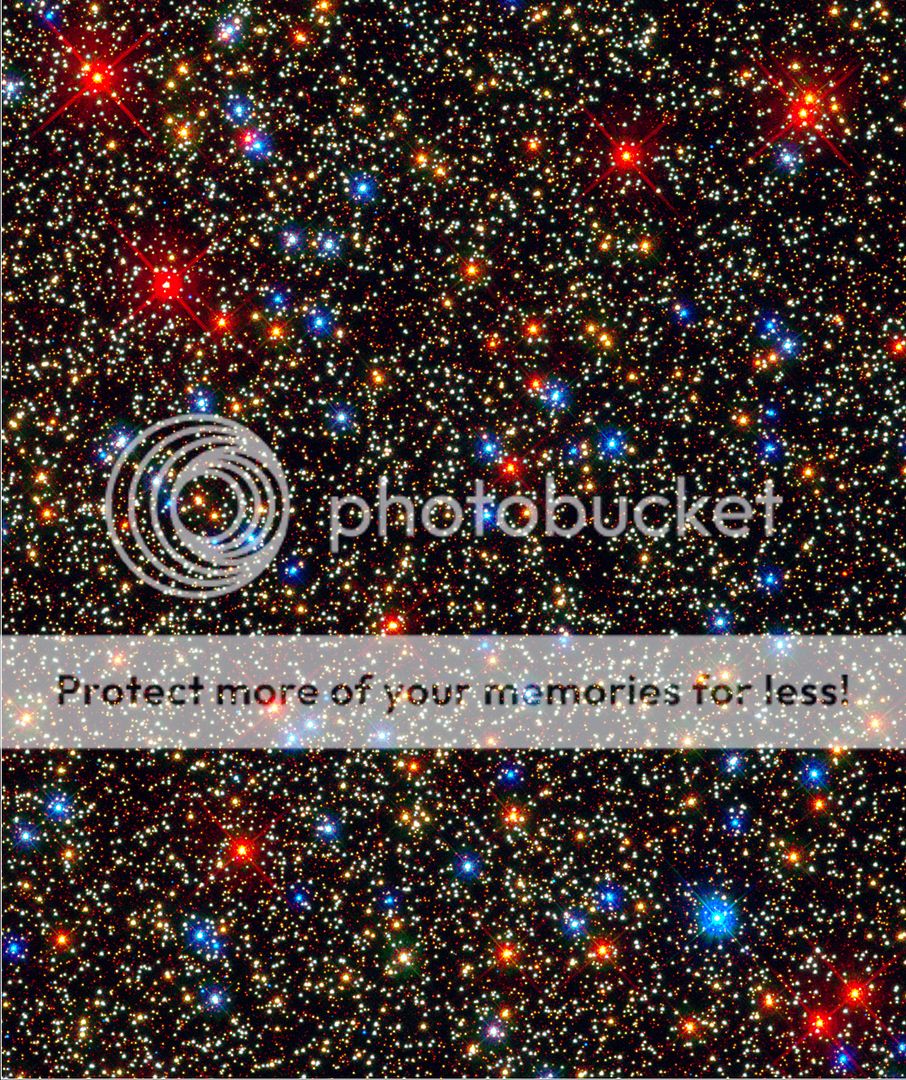
Director Toni Myers is a titan in the IMAX world. She’s worked in the format since its invention in the 1960s, and if you’ve ever seen an IMAX title having anything to do with nature or science, chances are she directed it. For the incredible flythrough sequences, she worked in collaboration with the Space Telescope Science Institute in Baltimore to produce the footage, then compiled them into a narrative with the supercomputer at the Advanced Visualization Laboratory at the University of Illinois at Urbana-Champagne. But let’s be crystal clear: none of the cosmos imagery is second-rate computer simulation; it’s all compiled from real data taken by the Hubble telescope.
There were other unique challenges in the making of this film. Myers couldn’t exactly send Director of Photography James Neihouse into space on the Atlantis, so they had to train the astronauts in the IMAX camera’s use. The Atlantis only had room for eight minutes of film capture, so they couldn’t afford to waste a single shot with bad focus or poor lighting conditions. If you’ve never witnessed a shuttle launch in person, Hubble 3D offers the next best thing with some truly visceral footage. Myers and Niehouse buried their 2 million dollar camera in a bunker of sand bags only 57 meters away from the launch site. The results are, as Massimino puts it, the closest most of us will get (and probably would ever want to get) to the actual feeling of a launch.
Leonardo Dicaprio’s narration is breathy and at times a bit hammy, but it’s hard to imagine a narrator who could do justice to the unbelievable scale of these images. Seeing the stars like this is a sublimely humbling experience. When the final images of the universe faded and the lights came up, many people around me (including ScriptPhD Editor Jovana Grbi?) were crying. If it sounds like I’m describing this movie as some sort of religious experience, well, you should just go see it for yourselves. Hubble 3D provides a captivating look at the fruits of one of mankind’s greatest scientific achievements.
Exclusive ScriptPhD.com Q&A with NASA’s Mike Massimino and Director Toni Myers
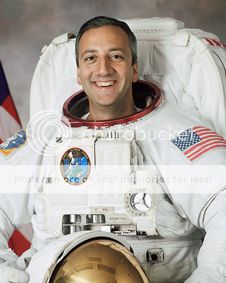
Mike Massimino is big for an astronaut, an attribute that made me nervous watching him crawl into the world’s most expensive telescope. But he’s also quite funny. Someone asked if he had any concerns about the film and he quipped: “Having to see my nose in 3-D.” He was also ecstatic about the film’s release because it was a rare opportunity to get his teenage daughters excited about something, not that their dad was an important astronaut on an important mission, or even that he’s in a movie, but that his name would be narrated by Leonardo DiCaprio.
Toni Myers has trained over 120 astronauts and cosmonauts in the art of IMAX photography. She directed the award-winning Space Station 3D along with many other space and nature-related IMAX pictures. After sending one of the most expensive cameras ever made into space, she had to wait an ulcer-inducing four weeks before the footage was rendered to see what the astronauts had actually filmed.
ScriptPhD.com joined a roundtable discussion with this pair to talk about the making of the film, the challenges of shooting in space, and the future of the American manned spaceflight program.
You were talking about how the night cycle offers this incredible view of the stars, and I wondered why we didn’t see more of that footage during the film?
Toni Myers: I can answer that- it has to do with shooting in IMAX–
Mike Massimino: You’d better. I just set the thing on auto and pressed the red button.
TM: -IMAX film is a 65 mm negative, so it just can’t capture stars during the night. If one of your prime shots happens during the dark you really can’t see it in IMAX. It’s
the equivalent of ASA 250 depending on how you rate it, it just won’t capture those wonderful images crews always talk about like lightning storms or aurorae.
Mike, how would you describe seeing the stars during a night pass?
MM: You know, when you first get to space you immediately run to the window and see that view during the day, and I remember my first flight I’d always be at the window during the day cycle and go ‘Ah, it’s dark, I’m gonna go downstairs’ until I decided to hang out at the window for a night pass, and I actually enjoyed the night passes as much or more as the day passes.
During the day it’s bright out, you can see the oceans and the clouds very clearly, when you go at night all of a sudden it’s like this magical time. You can see the line [of the approaching day pass]. And the stars, they don’t twinkle because they’re not coming through the atmosphere. They’re just these perfect points of light. You can see the gas from the milky way, you can see the Magellenic clouds, and all of the constellations like you’ve never seen before. It’s the greatest planetarium in the world. And you can also still make out the earth, sort of. Where the sky meets the earth there’s like this greenish bluish color where the sky meets the earth. And when you come over a city you can see the lights, kind of like when you’re on a plane, you see these clumps of light around cities. There was a lot of storm activity when we were flying over Australia at night time and you could see those thunderstorms light up the clouds from above. And you’re above it, you don’t see anything else, just the gases coming up from the clouds, it’s almost like it’s communicating-
TM: -It’s propagating.
MM: It’s almost like you’re spying on people. You’re flying over Europe or something, and you can see where people are living. You can see their light. You go over Africa and it’s pretty dark, maybe a few places with light. Japan is really cool because it’s all lit up and then you get those rings of light all around it, which I think are the fishing boats offshore. Then you come over the United States and it’s like a Christmas tree. The west coast is really lit up, you’ve got a lot of action up in the Chicago area, and up in the Eastern seaboard, man it’s just unbelievable. The signs of civilization over the US compared to the rest of the world are just incredible. You look down at Miami, and then there’s like a black-out in Cuba. They didn’t pay their electricity bill or something.
I had a question about the take-off. I was blown away, literally. How close are the cameras for that and are they destroyed?
TM: They are not sacrificial cameras, I wouldn’t have a job if I was destroying a couple million dollar cameras. They’re both in blast boxes, which are very protected and the one was actually on the pad looking up, 57 meters from the base of the shuttle. The box is literally drilled into the pad. It’s a hardwire start that NASA activates, and you have to time it before the launch so you have a handle on the shot before you get a bunch of dust in your face. And there are ¾ in. ports that the lenses look through, and we covered the whole thing in sand bags the day before so it looks like some kind of creature there. And we had a second one on top of the rotating structure above the shuttle. We had not actually done that position before and we knew there was gonna be significant motion in waves around it, but both came out really well.
MM: I was watching the movie for the first time with my wife in Washington, and I first thought my wife’s seat was shaking because of the sound from the movie during the launch, and then we realized it was me that was shaking. It really allowed me to relive this whole experience and allows me to share this experience with other people who weren’t there.
TM: I was shooting Space Station 3D and a rock went right through the ¾ in. glass on one of my cameras, and I thought, well, I’m spending the rest of my life in Kazakhstan, I can’t go home. But James [Niehaus] fortunately had put a neutral density filter in front of the lens in the camera and the rock hit the filter and just dropped, didn’t damage the camera, and as a result we had this 3D shot of debris coming towards the camera and shattering the glass, and when people watched that at the IMAX, many of them actually take their 3D glasses off and looked to see if they had shattered.
It’s not looking very good for our manned spaceflight program right now in this country, do you think people will look at this film and think maybe we’re making a mistake?
TM: I’d love to just say I think it’s a mistake and I certainly said so in this film. If we intend to go anywhere we need these skills, and at least a human and robotic partnership just like the space station. I think people need to understand that if you go back to the moon or especially if you go to Mars you’ve got to build some kind of infrastructure there and the things that crews have learned in the process of building a space station on orbit and how to live there on a permanent basis are everything you need for our future off the planet. I think we’ll look back and see this as just a minor little blip, if it is a blip. The Chinese will say they’re going to the moon tomorrow and everything will speed up.
MM: I think the movie does show people what we’ve been able to do with the shuttle here, and Toni mentioned the space station which was built by shuttle crews. I’m optimistic, I don’t think you’re gonna be able to kill the space program. Certainly throughout the world, we have a lot of partnerships with other countries , for example the Russians, who are our partners– we’re going to be using their space ships.
The shuttle program is ending, by the end of the year most likely we’ll be done, so you have to have something else. Going around the country with the support that we have from all the taxpayers who are paying for this thing and from politicians on both sides of the aisle, and from the president as well, I do not think that we’re going to accept not being a part of the international space community, and I mean sending people, not just the probes.
I think in America we see ourselves as explorers and enjoy being right in the heat of it. We’re not going to let other countries beat us, so I think we’re going to continue to send people into space and I think we’re going to want to have our own spaceships here to do that as a back up to the other countries. I think we’re going to have something, whether it’s going to be commercially developed, some kind of joint venture with NASA, will it take astronauts plus tourists, I don’t know how all that’s gonna be worked out, but I am convinced that we’re not gonna stop.
Why do you think it’s so important to send people into space?
MM: I need a job and I got these two kids going to college…No, in some ways it’s hard to justify, although Hubble 3D shows that we can do practical things, when Hubble breaks we can send people up there to fix it. When the bolt was stuck on the handle I was able to rip it off. We’re able to adapt and do things that you wouldn’t be able to do without a person on the spot. We’re all people here on this earth, we want to experience things first hand. Unfortunately not everybody can go there, but I think as a species we like to send at least some representatives out there to explore and see what’s going on so we can experience it as people. There’s no way that that argument can hold in any kind of budget discussion where it’s up against what the taxpayers can afford, but from just a human point of view I think that’s what’s going to keep us going in the end. We don’t want to just send a probe and take pictures, we want to have people see what it’s like to actually see a new world and describe what it’s like.
TM: To add one coda to that, I recently listened to former astronaut Mike Collins speak at the fortieth anniversary of the moon, which was a little more urgent, and what he said was that maybe we’re going to have to expand outward from this planet in the coming century because of a population explosion. There are very practical reasons. Think of how we look back at Galileo 500 years ago, I bet 500 years from now we will look back having established habitats elsewhere.
By the way, you can follow Mike Massimino on Twitter. He sent the historic first tweet from space during the Hubble repair mission.
Hubble IMAX 3D goes into limited IMAX release on March 19, 2010 and is in theaters nationwide in August.
View trailer:
Stephen Compson studied English and Physics at Pomona College. He writes fiction and screenplays and is currently working toward a Master of Fine Arts at UCLA’s School of Theater, Film & Television.
~*Stephen Compson*~
***********************
ScriptPhD.com covers science and technology in entertainment, media and advertising. Hire our consulting company for creative content development.
Follow us on Twitter and our Facebook fan page. Subscribe to free email notifications of new posts on our home page.
]]>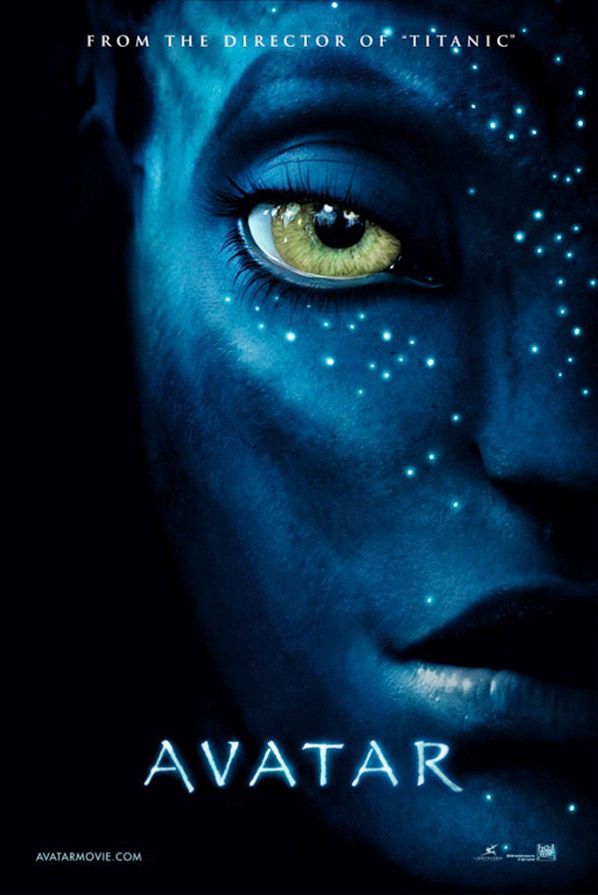
There are certain films that outlive their theatrical releases to become evolutionary stepping stones of filmmaking. Long after the popcorn has been munched and the Oscars handed out, these movies stand the test of time and usher in the cinematic equivalents of geologic Eras. D.W. Griffith’s The Birth of a Nation redefined the beauty of silent imagery. Alan Crosland’s The Jazz Singer integrated sound and heralded the rise of “the talkie.” Orson Welles’s Citizen Kane became a hallmark of big-budget studio genius. And every sci-fi film of the last forty years owes debt to the standard set by Stanley Kubrick’s 2001: A Space Odyssey. And then there is Avatar. That this film, with fifteen years of creative development, four years of full-time work, and endless hype, was bound to be good seems like manifest destiny. But it doesn’t just live up to its hype—it exceeds it. James Cameron has reinvented visual possibilities, perfected multi-layered storytelling and provided a service to audiences and filmmakers. He has transitioned us into the next big cinematic Era: 3D. Avatar is a ScriptPhD.com Editor’s Selection. For a full review, please click “continue reading”.
REVIEW: Avatar
ScriptPhD.com Grade: A+ (Editor’s Selection)
The year is 2154. The Earth has long been pillaged of its resources and habitability. Looking to solve this impending energy crisis, a human colony has been mining for the valuable mineral ‘unobtanium’ for three decades on Pandora, a distant Moon of the Alpha Centauri-A star system. At 4.4 billion light years away, travel to Pandora requires six years of arduous travel in cryogenic hibernation. Although possessing an Earth-like environment, Pandora’s atmosphere is toxic. Furthermore, native denizens, a humanoid Na’avi tribe, present a direct threat to humans, due both to their advanced biomechanical structure and animosity towards their occupiers’ fixations on what they feel is their sacred native land. In order to explore the territory safely, human being “drivers” must virtually connect their consciousness to a physical avatar hybrid composed of 50% human DNA and 50% Na’avi DNA. Referred to pejoratively by the Na’avi as “the sky people,” human imperialists become increasingly aggressive about destroying native territory to harvest ‘unobtainium,’ leading to perilous tensions between the two groups and the brink of all-out war.
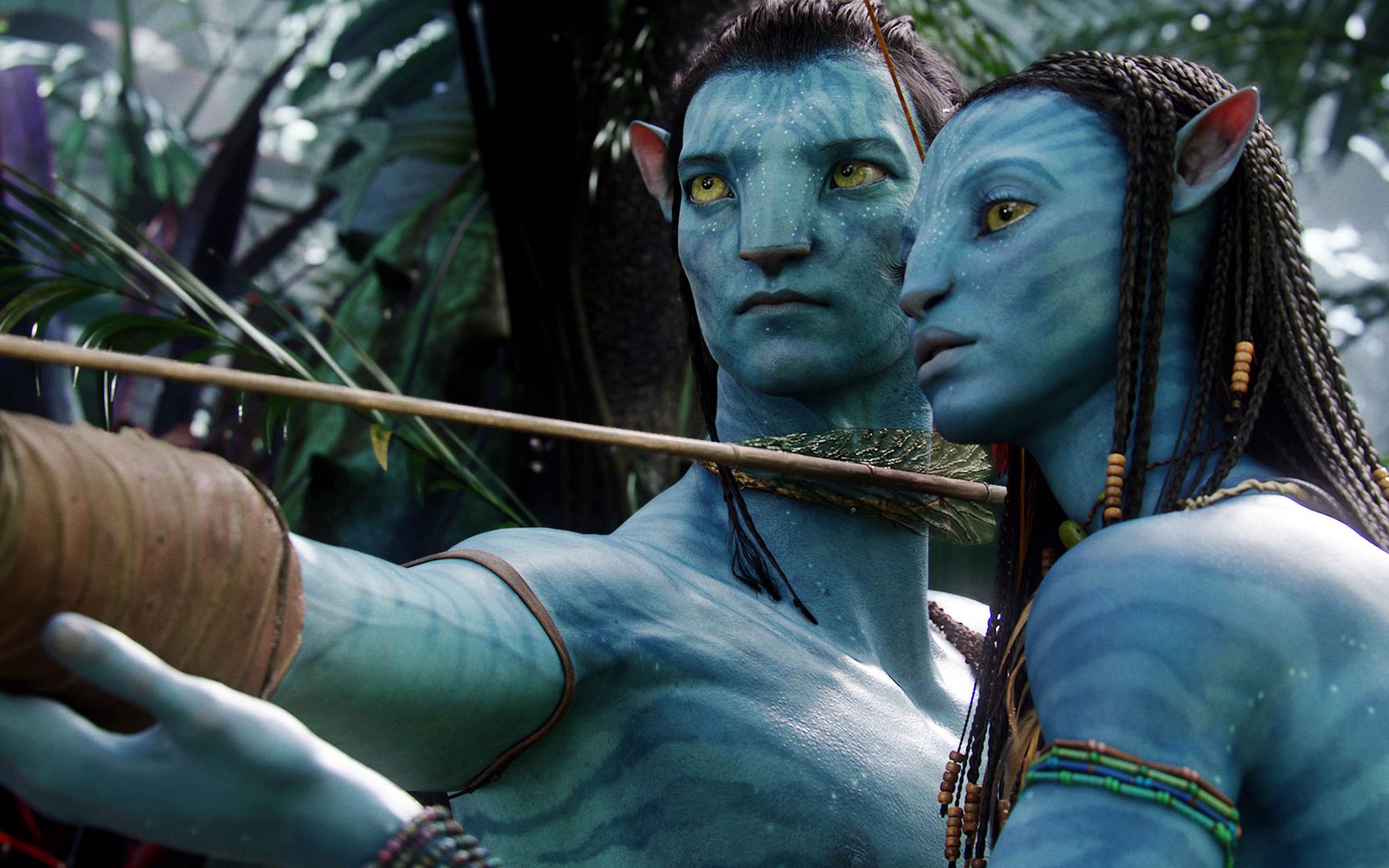
Enter Jake Sully (Sam Worthington), an accidental everyman hero and paraplegic ex-Marine. No doubt an ode to Cameron’s own brother John David, who served in the first Gulf War and even helped train Worthington for the role, Sully is lacking in mobility but still a warrior at heart. After the death of his twin brother, a scientist at the Avatar Program, Sully is the only one whose DNA matches and can drive his brother’s Na’avi avatar. Overly eager to use his new virtual body, Jake gets trapped on Pandora and saved by the beautiful Princess Neytari (Zoë Saldana). Far from viewing him favorably, she can’t ignore an auspicious sign from the Na’avi deity Eywah that Jake must become one of them and learn their ways. This is music to the ears of chain-smoking tough-as-nails head scientist Dr. Grace Augustine (Sigourney Weaver, flawless), who sees this as an opportunity to study the Na’avi in an unprecedented way. Colonel Miles Quatrich, a despotic Rambo played with jingoistic abandon by Stephen Lang, recruits Sully as special ops to learn the Na’avi weaknesses and where they may be infiltrated. Mediating the two camps is Resources Development Administration agent Parker Selfridge (Giovanni Ribisi), an insipid corporate monger who will work with whichever side leads to the ‘unobtainium.’ The scientists’ interests are purely the biology of Pandora and forging diplomacy with its peoples, the military to wield might (shock and awe, anyone?), and the RDA to make as much money as possible. Jake is caught between arbitrating these opposing human interests as he connects spiritually with the natural beauty of Pandora and falls in love with Neytiri. He must choose which side he will fight for and where his loyalties lie.
We have already written extensively earlier this week about the scientific and technological breakthroughs in the making of Avatar in our post entitled Behind Avatar: Science, Technology, Art and Design. This review is primarily concerned with its artistic achievements, which are significant. While some of Cameron’s derivative dialogue is a consistent weakness in his screenplays, he makes up for it with rich characters and familiar archetypes, particularly his trademark strong woman (in this case fulfilled dually by Weaver’s Augustine and Saldana’s Neytiri). Augustine is the kind of knowledgeable, authoritative female scientist we wish would get portrayed in mainstream film, and is equal parts firm with the inexperienced non-scientist as she is empathetic with his journey to Na’avi manhood. Neytiri is an exceptionally complex female lead, and a big credit to Saldana for a nuanced performance filmed in a virtually empty box. Neytiri teaches Jake to hunt, survive, and roam the treacherous land with a strong hand, but opens his eyes to where the true sacred wealth of her world lies—in respect for the Earth, the animals, the spirit and the biology, not what lies in the ground. Rounding out the cast are terrific CCH Pounder as Moat, Neytiri’s mother and Na’avi matriarch, Michelle Rodriguez as the rogue helicopter pilot Trudy Chacon (whose conscience leads to a very important role towards the end of the film), and Joel David Moore as über-nerdy scientist Norm Spellman, Jake’s Na’avi language coach.
The highlight of Avatar, and the price of admission, is the surreal beauty of the viewing experience and CGI melded seamlessly with live-action sequences shot in stereoscopic 3D. Cameron’s genius directing avoids the over-the-top action of Terminator or melodrama of Titanic to let the surroundings play a key role, if not the major role, in the film. He went to great lengths to create a unique flora and fauna for Pandora and he lets them shine. Nighttime scenes shot in bioluminescent forests, each footstep lighting a path on mystical trees, collapsing flowers, fluorescent foliage, fruit of impossibly vivid color, are nothing short of magical. Certain panoramic shots or flying sequences transported The ScriptPhD to childlike wonder, slack-jawed and only capable of a primitive ooooooh or ahhhhhhhh. Animals, eliciting enormous respect in the Na’avi culture, are at the epicenter of this film. The entire ark of Cameron’s creations, ranging from the most powerful Tyrannosaurus-like behemoth to the most delicate winged creature, is designed with precision and detail. By far the most critical of these is the banshee, a dragon-horse-eagle hybrid that must be tamed individually by each Na’avi before being adopted as a flying vehicle. Technical prowess in the penultimate human-Na’avi and banshee-military vehicle battle sequences are near perfection and can easily vie with the most beloved war movies of all time. So put on your 3D glasses, sit back, and prepare yourselves to be transported to an unimaginable universe.

Avatar is a modern film that smartly tackles many of the moral and academic quandaries we struggle with as a 21st Century society, including the environment, resource management, conflict, global imperialism and corporate greed. It sets new technology standards in digital animation and CGI. But it’s also a pure love story, an old-fashioned sci-fi thriller, an adventure and a centuries-old fable about acceptance, alienation and connection. “I wanted to create a familiar type of adventure in an unfamiliar environment by setting the classic tale of a newcomer to a foreign land and culture on an alien planet,” Cameron said. “The story is by design classic in its broad strokes, but we have plenty of twists and turns in store for the audience. I’ve dreamed of creating a film like this, set on another world of great danger and beauty, since I was a kid reading pulp science fiction and comic books by the truckload, and sitting in math class drawing creatures and aliens behind my propped up
textbook.” We are all grateful beneficiaries of the realization of his dream.
Avatar Trailer:
Avatar goes into wide release in IMAX and theaters nationwide on December 15, 2009.
~*ScriptPhD*~
*****************
ScriptPhD.com covers science and technology in entertainment, media and advertising. Hire our consulting company for creative content development.
Subscribe to free email notifications of new posts on our home page.
]]>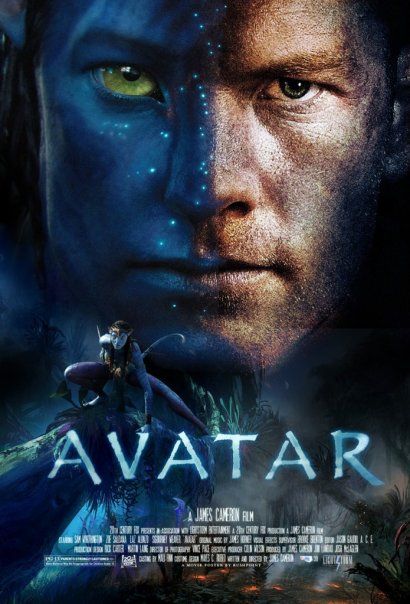
This weekend, millions of people will flock to IMAX theaters and cinemas around the world, 3-D glasses eagerly perched, in anticipation of James Cameron’s masterpiece Avatar, a cinematic œuvre fifteen years in the making. Underscoring this two and a half our epic lie unparalleled technological, scientific and artistic achievements, including the invention of a novel 3-D film camera, the complete biological and linguistic realization of a virtual world, and flawlessly integrated art direction and conceptual renderings. Many people’s post-viewing reaction will be, “How did they do that?!” ScriptPhD.com is proud to present a special Avatar preview that includes behind-the-scenes secrets and a review of the must-own companion design book The Art of Avatar. Before you see the movie, get to know it.
Fresh off of astronomical success with Titanic—11 Oscars and the highest-grossing revenue of all time—James Cameron could have done anything. He was King of the World, remember? Any film, any project, the sky was the limit. Instead, he disappeared, only to reemerge in 2005 to propose a new big-budget blockbuster to 20th Century Fox. They funded a $10 million 5-minute prototype for Avatar, but hesitated green-lighting full production, citing the 153-page script (first conceived in 1995), ambitious new video technology, and a story producers feared would alienate audiences. Only when Disney expressed interest in the film did they give Cameron a full go-ahead. The result is a movie with a final budget of over $230 million that required four years’ of full-time work to complete. Avatar is a sweeping epic that takes place on fictitious Pandora, a distant moon in the Alpha Centauri-A star system that has been colonized by humans in the year 2154. Discovery of an abundant precious ore, unobtanium, that might solve Earth’s energy crisis leads corporate and military interests to infiltrate the ranks of a native population of humanoids called the Na’avi. Because of a toxic atmosphere, human “drivers” link their consciousness to genetically engineered avatar models—50% human DNA, 50% Na’avi DNA. Jake Sully, a paraplegic ex-Marine, has been called to take his dead brother’s place for scientific exploration of Pandora’s ecosystem, biosphere and indigenous peoples. Inadvertently enveloped into learning the Na’avi culture and ways, Jake soon falls in love with the Princess Neytari and becomes caught in a battle between his own people and the virtual world he has adopted. Avatar, however, transcends whatever story or theme one imagines to define it. It is a pinnacle of scientific and technological innovation, an ode to its filmmaker’s vast travels (earthly and underwater) and intergalactic fascinations, and a harbinger of a filmmaking style that will redefine 21st Century cinema. “This film integrates my life’s achievements,” Cameron said in a New Yorker profile earlier this fall. “It’s the most complicated stuff anyone’s ever done.”
The Technology
•Performance Capture
Motion capture and computer-generated imagery (CGI) are not new to film. Motion capture (or green screen technology) was first introduced by Cameron for Total Recall, with the first CGI human movements added later for Terminator 2. It is, however, inherently limiting to the size and proportions of the human body, in particular the actor of the character being portrayed. The eyes can’t be moved, for example, and makeup often inhibits actor performance. CGI is traditionally done by placing reflective markers all over an actor’s face and body, which are then interpreted by computer technology to create digitized expressions for the CG character. However, the gulf between human and CG expression, referred to as the “uncanny valley”, is often quite noticeable. To bridge the two and create the first truly seamless hybridized CGI, Cameron and his team developed a new “image-based facial performance capture”, requiring the actors to wear special headgear rig equipped with a camera. With cameras placed just inches from their face, actors’ every muscle contraction or pupil dilation was captured and digitized, creating astounding emotional authenticity to their Na’avi avatar counterparts. “If Madonna can be bouncing around with a microphone in her face and give a great performance,” Producer Jon Landau said in a New York Times interview, “we thought, ‘Let’s replace that microphone with a video camera.’ That video camera stays with the actor while we’re capturing the performance, and while we don’t use that image itself, we give it to the visual-effects company and they render it in a frame-by frame, almost pore-by-pore level.” The scope of clarity and precision of the head-rig allowed for a much larger capture environment than ever before, a bare stage called the “Volume”, six times larger than any previous capture environment.
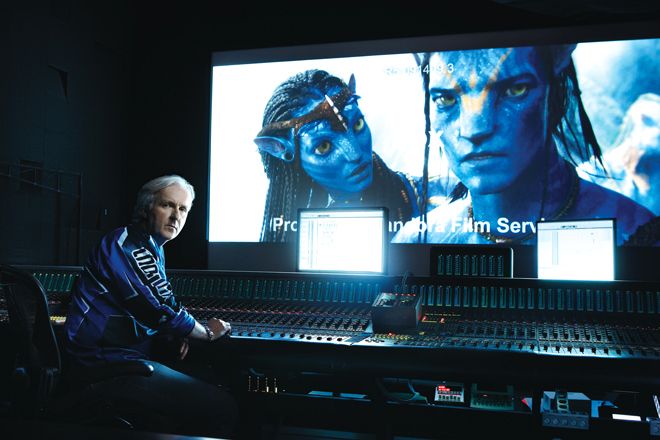
•Digital animation
State-of-the-art animation renderings for Avatar were done by Peter Jackson’s New Zealand-based digital-effects studio Weta Digital. A team of talented artists transferred basic renderings (more on this below) into photo-real images, particularly using new breakthroughs in lighting, shading, and rendering. “I’ve seen people looking at Avatar shots, being convinced they are somehow looking at actors in makeup,” Jackson says. The realism was extended to each leaf, tree, plant and rock, which were rendered in WETA computers. Additionally, a team of artists, headed by Academy Award winner Richard Taylor, designed the props and weapons for the Na’avi and humans. All of this digital design took over one year to complete and took up over a petabyte, one thousand terabytes, of hard drive space!

•Stereoscopic 3D Fusion Camera System
As far back as ten years ago, James Cameron had wanted to develop a 3D camera. At that time, the concerted goal was to use it to shoot a gritty Mars movie that would act as an emblem for space exploration (Cameron is on the advisory board of NASA). At this time, stereoscopic 3D cameras were the size of washing machines and weighed 450 pounds. The challenge issued to production partner Vince Pace was to develop a lightweight, quiet camera capable of shooting in both 2D and 3D. The result of over seven years of hard work was the groundbreaking new Fusion Camera System, the world’s most advanced 3D camera. It facilitated an almost flawless merger between live action scenes and CG scenes. Most of the live-action scenes were shot in Wellington, New Zealand on sets constructed by a massive team of 150 contractors. Live-action sets included the link rooms (where the humans transported to their Na’avi avatars, the Bio-Lab, the Ops Center military operations area, and the Armor Bay military stronghold, which housed all the weapons and transport units.
•Virtual Camera/Simul-Cam
Tying together the 3D and CG technology of visualizing the film were two new Cameron intermediary inventions: the virtual camera and the simul-cam. The virtual camera, used by Cameron in the Volume motion capture stage, wasn’t actually a camera at all. Looking like a video game controller, it simulated a camera that was fed CG images by supercomputers surrounding the Volume. This allowed amplification of each small adjustment on the virtual production stage, from camera movement to actor interaction, to gauge the overall effect on the final big-screen cut. The simul-cam fed, in integrated real-time, CG characters and environments into the live action Fusion 3D camera eyepiece, allowing Cameron to direct virtual scenes on Pandora the same way he would a live-action scene.

The Language
Not satisfied with merely creating an otherworldly planet and its native beings from scratch, James Cameron set about equipping the Na’avi humanoid tribe with a language of their own. Audiences will be delighted in the authenticity—all communication on Pandora is shown through subtitles befitting a foreign film. Ever the mindful scientist, Cameron hired USC professor and linguist Dr. Paul Frommer to engineer the dialect from scratch, resulting in a respectable, self-sufficient vocabulary of about a thousand words bound by a consistent sound system, grammar, orthography, and syntax. In an extensive interview with Vanity Fair, Dr. Frommer says that Cameron approached him as far back as 2005, when Avatar was going by a code name of Project 880. As with every other aspect of this film, Cameron’s genius micromanagement provided Dr. Frommer with the basics of the sound and structure he was looking for. “I didn’t start from absolute ground zero,” said Frommer, “Because James Cameron had come up with, in the early script, maybe 30 words. Most of them were character names, but there were a couple of names of animals. So at that point I had a sense of some of the sounds that he had in his ear and it reminded me a little bit of some Polynesian languages.”
In addition to painstakingly working on the syntax for over five years, which he compiled into a pamphlet entitled Speak Na’avi, Dr. Frommer worked closely on-set with Avatar actors to ensure proper pronunciation and phonetic differences between native Na’avi speakers, and their human avatar contrasts. Beyond the film, Dr. Frommer is not done developing Na’avi, in the hopes that it might take off like Klingon did post-Star Trek. “I’m still working and I hope that the language will have a life of its own,” the professor said in an interview with the Los Angeles Times. “For one thing, I’m hoping there will be prequels and sequels to the film, which means more language will be needed. I spent three weeks in May, too, working on the [Avatar] video game for Ubisoft, which is the name of a French company.” (The Hollywood Reporter recently posted a terrific interactive preview of the video game.)
The Science
A technically-adept filmmaker such as James Cameron could have been satisfied with simply allowing his 3D team to virtualize Pandora, especially since most of the world is synthesized from scratch. Instead, Cameron, himself an accomplished diver and the brother of an engineer, painstakingly, some would say obsessively, set about populating the moon with flora and fauna using rigorous scientific methodology. He enlisted the help of UC Riverside botanist Jodie Holt, who became an expert on Pandora’s vegetation and mentored Sigourney Weaver in portraying a botanist in the film. Each leaf, plant, creature, and weed was given an original Na’avi name, a Latin taxonomy, a biological description, population and occurrence, ecology and ethnobotany. Click here to watch a brief interview with Dr. Holt about her role in assembling the biological vision behind Padora’s ecosystem.
Incidentally, all of the information I have written about above and more is being compiled by the film’s writers, producers and directors into a 350-page tome called Pandorapedia, to be made available later this winter. Until then, for curious fans and film devotees looking to gain insight into the artistic development process of Avatar, ScriptPhD.com recommends the stunning design book The Art of Avatar, reviewed below.
Cinema, Meet Art + Design
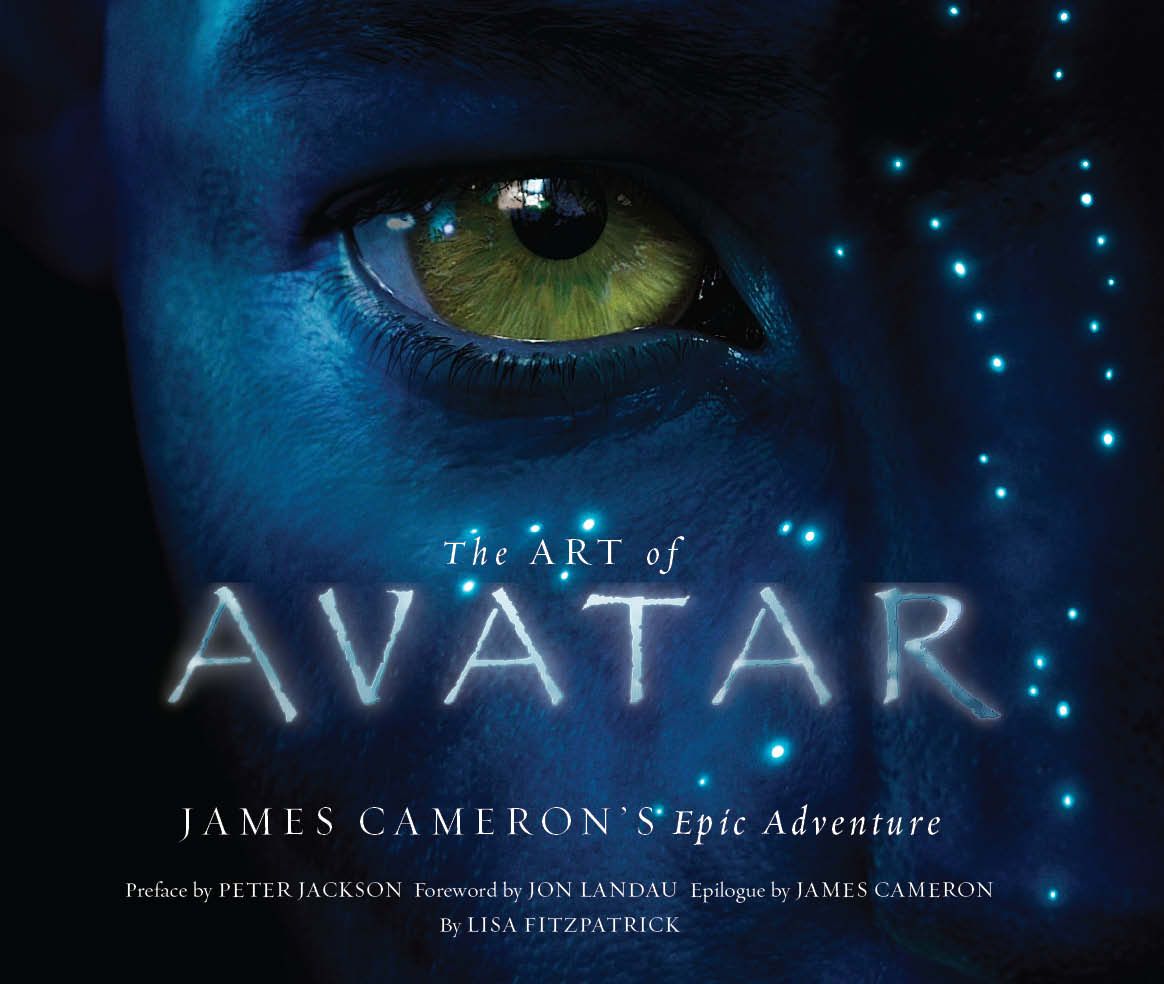
While planning and technology were essential nuts and bolts of its cinematic architecture, they alone do not constitute the blueprint or heart and soul of a film such as Avatar, especially considering the ambitious multi-thematic plots and visual realm. Like any innovative, transformative concept or endeavor, Avatar began and ended with the simple sketch. In a gorgeous, 120 full-color illustration rich companion volume, The Art of Avatar, written by Lisa Fitzpatrick, James Cameron and Peter Jackson, provides a fully transparent visual documentation of the first phases of the development and conceptualization of Avatar. The book’s 200+ works of art include compositions by renowned film artists (Rob Stromberg, Wayne Barlowe, Ryan Church, Ben Proctor and Cameron himself), descriptive script excerpts, commentary and a guide to each component’s realization process. As Fitzpatrick notes in the book’s copy, “it is the artist behind the technology that makes the images of this book, and ultimately the movie, so remarkable.” Having seen both (review here), ScriptPhD.com wholeheartedly agrees.
Suspension of disbelief. The cornerstone of any creative compact between a film and its audience. A compulsory foundation for escaping into imagined worlds and embracing its characters and adventures. Notwithstanding this axiom, Avatar still represents a giant leap forward in the world of filmmaking, according to Peter Jackson, Oscar-winning visionary behind The Lord of the Rings and recently District 9. “Every once in a while, we will see a movie that transcends cultural barriers, genre and taste—a film that lives on in the minds of the audience, years after the fact, a film with a story, characters and dialogue so memorable that it creates its own mythology,” Jackson notes in his foreword to The Art of Avatar. A project of such magnitude can initially seem insurmountable. Executive Producer Jon Landau said he felt like a NASA engineer in 1961 when President Kennedy announced we were heading for the moon—only the moon in question was Pandora.
Much of the initial design was jump-started by Cameron, himself a talented illustrator and meticulously descriptive screenwriter. His own sketches included largely preserved concepts of Na’avi clothing and signature physical appeararance, including a complete design of the heroine Neytiri’s painted face. The humans’ habitat the Venture Star included an 11-page document on how the ship functioned, with physics and engineering details such as light-speed calculations, pod dynamics, engine thermodynamics and architectural plans. Cameron’s Avatar script treatment—a plot and content synopsis—included visual primers such as glowing phantasmagorical forest, purple moss [that] reacts to pressure, rings of green light, dreamlike, surreal beauty that allowed artists to create accurate renderings of Pandora’s biosphere (see below picture).

Content in The Art of Avatar is smartly divided into categories, including transport, science, gadgetry, and biology. Transport and gadgets, including the Valkyrie shuttle and the Samson untilitarian vehicle, are designed with layouts and specificities worthy of industry standards. Particularly impressive to The ScriptPhD were the details and accuracy of early renderings of the home base biolab, clearly conceived by a man with a profound respect for science. Illustrations of labs are laid out to look like actual labs, with incredible attention to the link unit allowing the humans to transform into their avatars and the incubator tubes housing avatars, by far the most challenging prop for Weta Digital to produce. As an example, the Armored Mobility Platorm (AMP) suit used by military to safely roam around Pandora was designed by TyRuben Ellingson to be functional and accessible (good viewing capacity, easy maneuvering, flexible joints, rearview mirrors). Pictured below is just one of a multi-page design book for the AMP suit alone!
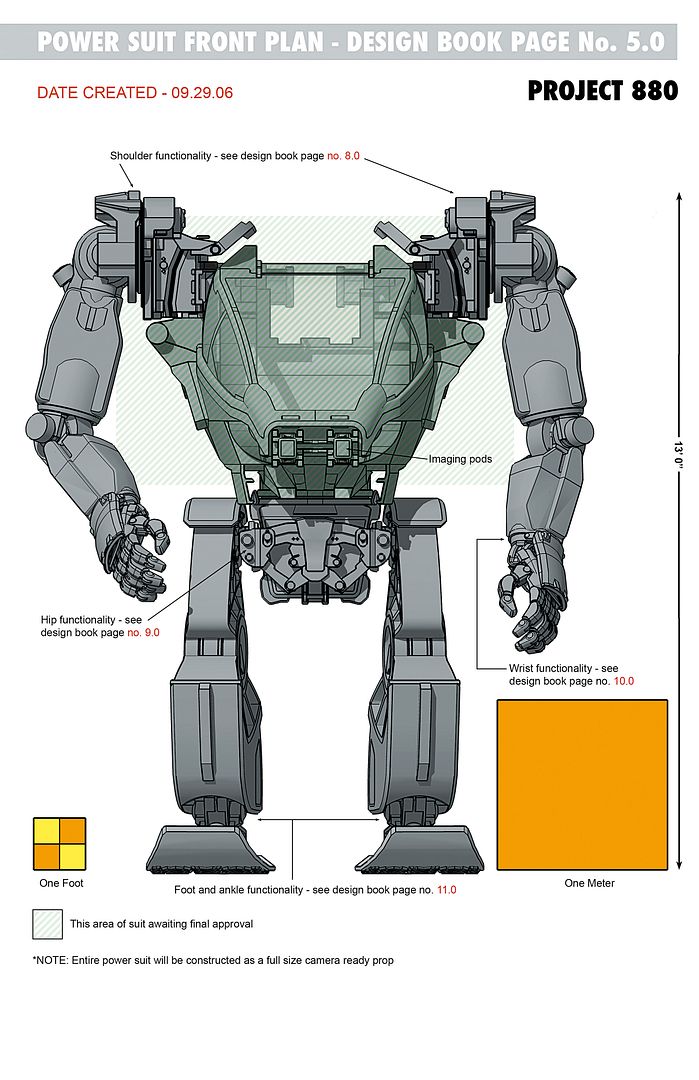
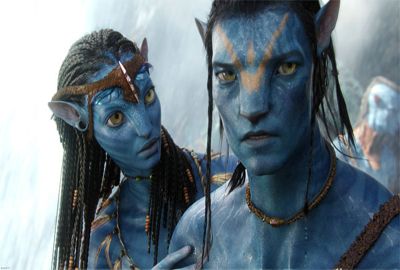
Biology illustrations are largely split categorically by flaura/fauna and creatures. Pandora’s many unique forests, the Home Tree and Floating Mountain key to the film’s plot, the illuminated foliage, and bioluminescent Fan Lizards and Woodsprites—original Cameron creations—each get individual renderings. In several pull-out pages, the creative process is gradual. Neytiri, for example, started as a pencil sketch, evolved into a clay figurine, then 3D artwork, and finally a screen version. Most interesting to note was the process of creating the original creatures of Avatar. The most critical and symbolic of these was the Banshee, a heroic creature that enjoys a lot of screentime in the film. It is meant to be a metaphor for the eagle, and, as a transport vehicle for the Na’avi, to represent them as a flying culture. Take a look at the transition between an early automotive biomechanical concept sketch by designer Wayne Barlowes and final color digital drawings.
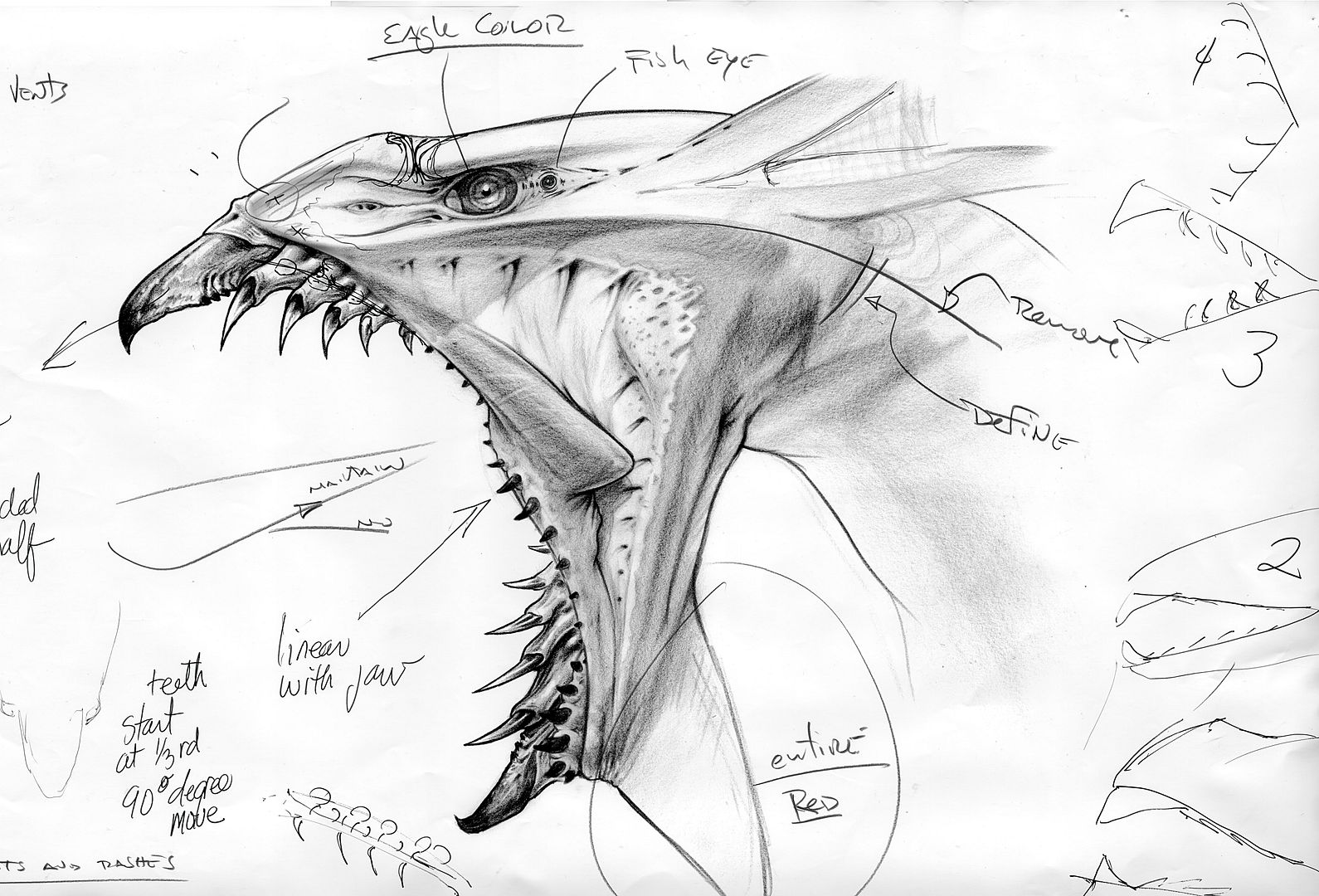
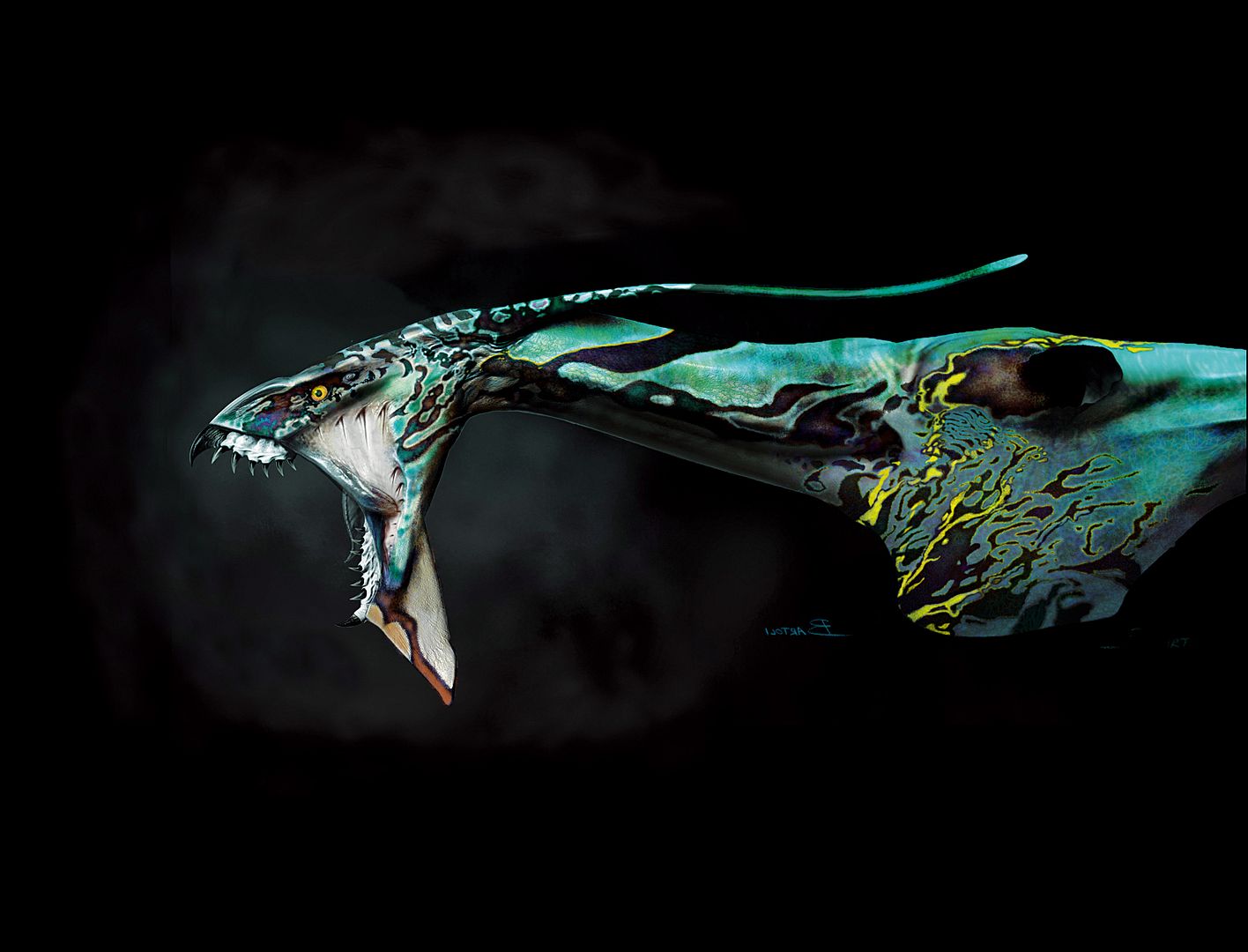
In an exclusive epilogue, James Cameron confesses that he feverishly wrote Avatar in 1995 over the span of just three weeks, fueled largely by his own imagination, every piece of fantasy art ever created, and his rigorous, extensive experience under the ocean. While certain things were specific to Cameron’s preferences—namely the Thanator and Viper wolf drawn by himself—all others were achieved through a sometimes turbulent, always rewarding collaborative process with a talented team of artists, designers, scientists and technologists. “The goal [of the design] became to mix the familiar and the alien in a
unique way,” Cameron states. “To serve the metaphor and create a sense of familiarity for the audience, but to always be alien in the specifics.”
Lucky, lucky audience.
Avatar Trailer:
The Art of Avatar was released November 30, 2009. Avatar wemt into wide release in IMAX and theaters nationwide on December 15, 2009.
~*ScriptPhD*~
*****************
ScriptPhD.com covers science and technology in entertainment, media and advertising. Hire our consulting company for creative content development.
Subscribe to free email notifications of new posts on our home page.
]]>
